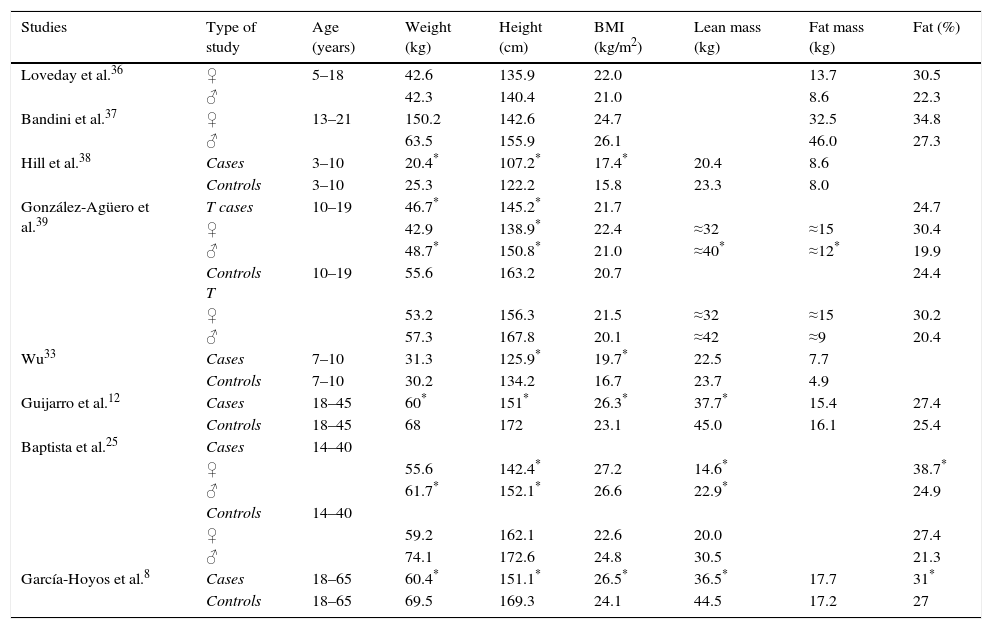Patients with Down syndrome have a number of risk factors that theoretically could predispose them to osteoporosis, such as early ageing, development disorders, reduced physical activity, limited sun exposure, frequent comorbidities and use of drug therapies which could affect bone metabolism. In addition, the bone mass of these people may be affected by their anthropometric and body composition peculiarities. In general terms, studies in adults with Down syndrome reported that these people have lower areal bone mineral density (g/cm2) than the general population. However, most of them have not taken the smaller bone size of people with Down syndrome into account. In fact, when body mineral density is adjusted by bone size and we obtain volumetric body mineral density (g/cm3), the difference between both populations disappears. On the other hand, although people with Down syndrome have risk factor of hypovitaminosis D, the results of studies regarding 25(OH)D in this population are not clear. Likewise, the studies about biochemical bone markers or the prevalence of fractures are not conclusive.
Las personas con síndrome de Down podrían tener un mayor riesgo de osteoporosis debido a un envejecimiento precoz, alteraciones en el desarrollo o la presencia de factores de riesgo como baja actividad física, menor exposición solar, elevada comorbilidad o el uso de tratamientos que afectan al metabolismo óseo. Además, tienen peculiaridades antropométricas y de composición corporal que podrían influir en su masa ósea. Los estudios en adultos vienen a decir que tienen una densidad mineral ósea en g/cm2 inferior a la de la población general, pero la mayoría no tienen en cuenta el menor tamaño de sus huesos, de tal manera que cuando se ajusta por el mismo (densidad mineral ósea volumétrica g/cm3), estas diferencias se reducen o desaparecen. Los estudios sobre niveles de 25(OH)D, parámetros de remodelación ósea o prevalencia de fracturas no son concluyentes.









